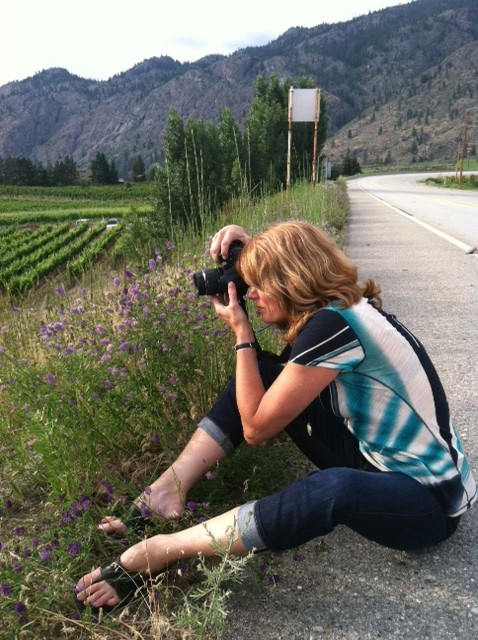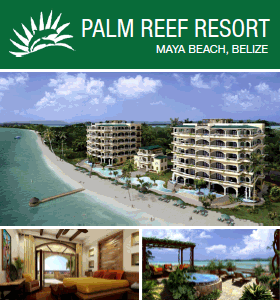Panama’s Pantry
Posted by in UncategorizedArticle published in the Winter 2020 issue of Taste & Travel Magazine
I’m driving through the deepening dusk into the town of Boquete. Just as the last glimmer of light is fading, a mountain rises spectacularly out of its shroud of mist, revealing a ghostly pointed peak for an instant, only to disappear into darkness. I feel a thrill of anticipation, sensing I’m heading somewhere special.
I had wanted to see Panama for years, in part to knock the Canal off my bucket list. Panama also intrigued me because of its geography – a land bridge between Central and South America, the Pacific Ocean on one side and Atlantic on the other. It has been a crossroads for the migration of many ethnic groups, from the Americas to Europe, from the time of the Spanish conquest until today and a transit zone from east to west, attracting Asians and Europeans, many of whom now live here. I wanted to learn how that influenced the cuisine, coffee and culture.
Panama has been billed for years not only as a top tourism destination, but also a retirement haven in part due to its tropical climate, abundance of sunshine, beaches and natural environment. When I recently read about the small mountain town of Boquete, near the Costa Rican border, I knew it was time to make the trip. Nestled in the highlands of Panama at an altitude of 1200 metres (3900 feet), in the region of Chiriqui (an indigenous word that means “Valley of the Moon”), boasting year-round spring-like temperatures and billed as Panama’s Breadbasket, its Flower Capital as well as the ‘Napa Valley of Coffee’, I didn’t think Boquete would disappoint me.
“Is the restaurant open?” we inquired at Butcher Chophouse. The rain had started to come down in sheets and the whole town was in blackout. “Yes, we cook with a generator when the power goes out.” Tasty, tender steaks with glasses of California Merlot arrived promptly, while the sound of the rain lent the room an intimacy a sunny patio could not afford. Arriving off-season added to my experience in unexpected ways.
I began to look forward to the drama the intermittent showers and almost constant mist lent the bucolic countryside, which reminded me of the Yorkshire Moors. When the early morning farmers market was rained out, the makers, indigenous Ngäbe-Buglé from the nearby mountains, Ecuadorian Incans and California ex-hippies, scrambled to save their merchandise from the deluge. Seconds later, everyone was laughing as the water came down and the swollen River Caldera rushed by. Then the sun came out again.
The town’s ever-changing vistas of Baru Volcan, an inactive, climbable volcano, are breathtaking. The 3,475 metre (11,401 foot) volcano, Panama’s highest peak, often appears to be floating, the misty rain clouds covering its base. The clouds, or “Bajareque,” move and shift, changing the panorama of the surrounding hills on the quarter hour. The Swiss-style houses which dot the hills around town crawl with coral and magenta bougainvillea, making Boquete feel like a tropical Swiss village. Apart from year-round hiking and mountain-climbing and an abundance of rivers and waterfalls, Boquete has an evolving farm-to-table cuisine derived from indigenous and Spanish cultures and the best coffee I have ever tasted. The town of only 20,000 (6,000 ex-pats) has over 80 restaurants, including Panamanian, Italian, Peruvian, Chinese and Argentinian, with coffee shops on every corner.
The construction of the Panama Canal in the early 20th Century brought workers and settlers from China, France, Africa and Italy as well as Germany and the nordic countries. Unlike other regions in Panama, African populations in Chiriqui remained small. The gastronomy of Chiriqui derives mainly from the indigenous Ngäbe-Buglé and Spanish culinary traditions. Flavours here are milder than those of its South American or Caribbean neighbours. Common ingredients are corn, rice, wheat flour, plantains, cassava, beef, chicken, pork and of course, seafood. The word “Panama” means abundance of fish.
I order a traditional Panamanian lunch on the Panamonte Hotel’s breezy front patio — slow-roasted porkbelly with fried plantain in a guava-smoked onion BBQ sauce, sweet corn crepes with smoked beef filling and corn fondue — along with a delightfully fresh micro-green salad on a plate decorated with edible flowers. The Panamonte prides itself in serving both traditional and foreign dishes, all with local ingredients. The 102-year-old colonial-style hotel is an institution in Panama, bringing people regularly from Panama City.
I’m talking to the “anthropologist of Panamanian Gastronomy,” Charlie Collins, owner and Executive Chef of the Panamonte, who tells me plantain is a staple in Panamanian cooking. The Chiriqui region is considered the breadbasket of Panama because it supplies plantain, other vegetables, grains, fruits, milk, coffee and meat products to the rest of the country. Plantain is endemic to the American continent, unlike bananas, which originated in Africa.
“I chose the name T’ACH as the title of my second book because the word means both “plantain” and simply “food” in the indigenous Wounan language, so important was the vegetable to their survival,” Charlie tells me. His beautiful book is chock full of traditional recipes representing each of fourteen regions in Panama. T’ACH won the Best Book of the World in 2018 in the culinary heritage category by the Gourmand World Cookbooks Awards. Charlie worked in upscale hotels in the U.S. and the Virgin Islands before returning to Panama where he now manages the hotel founded by his grandparents in 1946. He is working on his third cookbook, called T’ACH II Contemporary Panamanian Cuisine.
Next day I line up at El Sabrosón, a restaurant frequented by locals where we order from an array of Panamanian dishes displayed behind a glass case. The menu is pretty basic – roast chicken with white rice and plantain fritters, rice in beef sauce with plantain fritters and corn empanadas, grilled shrimp with rice and salad. All very tasty, cheap and can be washed down with a soft drink or a Balboa (a local beer and also the currency). A great bocadillo de jamón, or ham sandwich, can also be had at the popular Boquete sandwich shop.
Sunday I’m invited to a Father’s Day BBQ at the casual, yet upscale Boulder 54 Restaurant (named for the massive boulder dominating the lounge and also for the restaurant’s 54-label wine list) which specializes in world fusion cuisine with Asian, European and local Panamanian flavours.
The restaurant is busy and we are helping ourselves to whole pig filet mignon, which has been on the open-air grill all day. Boulder 54 is known for their events, such as the Gueria de Brasa or “War of Charcoal”, a BBQ held on U.S. Memorial Day weekend. Chris Young, Owner and Executive Chef, brings out a plate of octopus with a curry, lemongrass and coconut sauce. I ask him the secret of his rich sauce. “It’s my Instapot”, he says, although I know it owes as much to his U.S. chef training and use of fresh, local ingredients. Chris, who moved to Panama in 2010 from Kansas, has written a cookbook called “Feed the Crave” for home cooks — a collection of his favourite grilling recipes, with mouthwatering dishes like Grilled Pork Tenderloin with Creamy Coffee Sauce & Mushrooms and Cherry Glazed Pork with Chocolate-Infused Sweet Potatoes.
Raul Camacho presides over the Father’s Day proceedings with Chris. Raul, from Central Panama, is an expert in indigenous cuisine and won the national “Top Chef” competition, which was to demonstrate to an international audience how to cook Panamanian food. We try the Caribbean Ceviche, a seafood cocktail made with cod, sole and trout, lime juice, onion, cilantro, garlic and habanero pepper. The secret of a ceviche is the acidity of the citrus which “cooks” the fish without a heat source. After dinner, Chris introduces me to “Jambu”, a small flower he buys from local herbalists, which opens up the tastebuds — it gives my coffee an extra kick. Next time I will try it with a glass of wine.
“The Pope referred to coffee as the mountain wine,” Cesar, my guide at the Finca Lerida Coffee Estate, tells me. Finca Lerida is renowned for its Geisha coffee, named for the area in Ethiopia where the beans originated. It wasn’t planted for a long time because it was so delicate and needed more space than other beans.
There are two types of coffee bean, Arabica and Robusta. Arabica is the highland coffee, which only grows over 900 metres (2950 ft) above sea level (we are currently at about 1600 metres (5,250 ft) and the coffee is grown as high as 2000 metres (6,650 ft). The mildly-caffeinated Arabica beans are used to produce Geisha, considered the champagne of coffee, which is traded on international markets for up to $350 U.S. a pound.
The Geisha I taste has a mild, distinctly floral quality a bit like jasmine tea. It truly is delicious, but even the less famous beans here produce a creamy, rich coffee, with aromas of molasses, honey, chocolate, hazelnut and wine. Year-round sunlight, a cool climate, volcanic soil and the right amount of rain produce the perfect micro-climate here for coffee-growing.
My drive down the mountain at sunset takes me past the ledge-built houses of the coffee farmers. The local women walk home in their colourful naguas. I watch the birds dip and dive through the mist and reflect on how I will miss the moody volcano, the flowers, the birds, the cafe con leche, the empanadas, the impromptu, unapologetic downpours, the equally sudden bursts of sunlight, the ghostly silhouette the primordial cloudforest imprints on the horizon at dusk.
Restaurants
Boulder 54 Restaurant – Jaramillo, Chiriqui – @boulder54
Panamonte Inn & Spa -Avenida 11 de Abril, Boquete www.panamonte.com
Butcher ChopHouse – Avenida Central, Boquete
Tre Scalini – Avenida Central, Boquete
RetroGusto – Avenida Central, Boquete ilretrogusto.com
Accommodation
Vista Volcan Bed & Breakfast – Jaramillo, Chiriqui – www.airbnb.com
Panamonte Inn & Spa – see above
To view article in Taste & Travel Magazine:
https://online.flowpaper.com/79d4074f/tandtmagissue36/#page=75
You can follow any responses to this entry through the RSS 2.0 Both comments and pings are currently closed.



